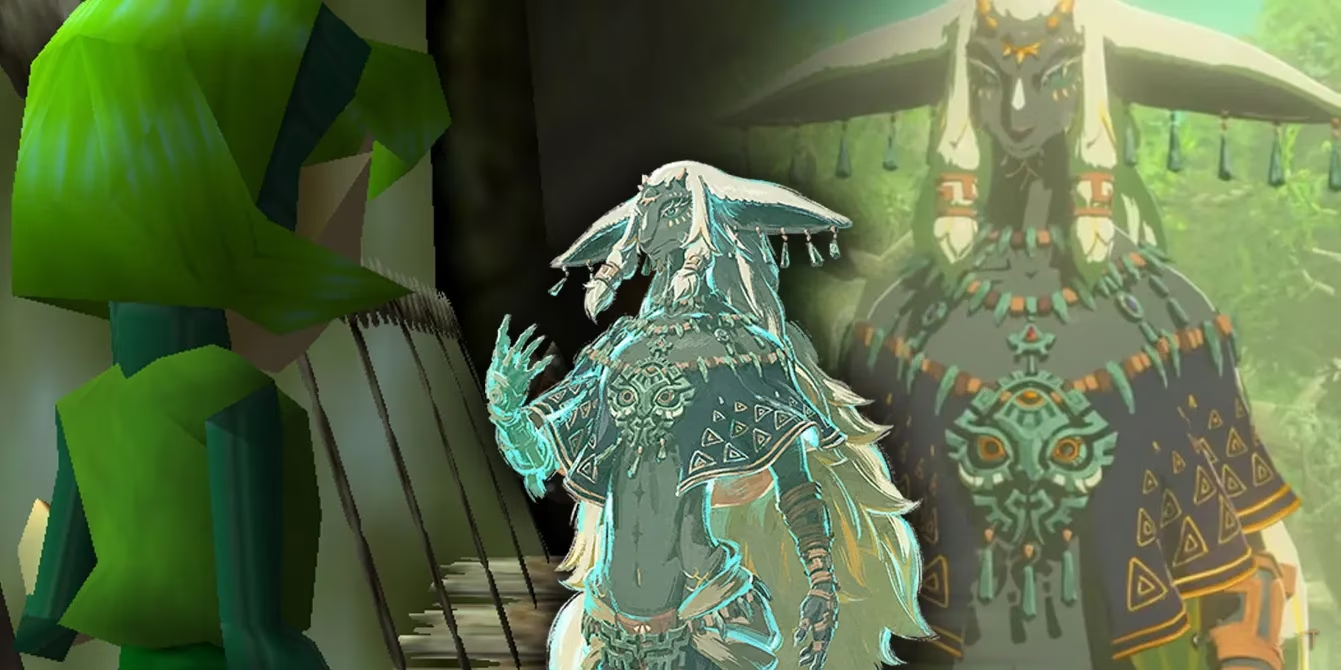The sprawling tapestry of Hyrule’s history is woven with threads of reincarnation and recurring destinies, where ancient spirits find new vessels across millennia. When Tears of the Kingdom resurrected Rauru—Ocarina of Time’s enigmatic owl-like Sage of Light—as Hyrule’s founding Zonai king, it ignited fervent discussions among fans. This audacious narrative leap demonstrated Nintendo’s willingness to plumb the depths of its own lore, transforming a peripheral figure into a cornerstone of the kingdom’s origin story. Yet amid this renaissance for forgotten characters, one sage’s absence grows conspicuous: Saria, Link’s forest-dwelling confidante, whose emotional resonance in Ocarina of Time made her far more than a footnote. If Rauru could ascend from obscurity to royalty, why shouldn’t she receive similar reverence?
The Eternal Cycle: Reincarnation in Hyrule
Reincarnation isn’t merely a plot device in The Legend of Zelda—it’s the bedrock of its cosmology. Iconic figures like Link, Zelda, and Ganon perpetually return through the ages, their souls reborn to fulfill cyclical roles in Hyrule’s fate. But Tears of the Kingdom expanded this concept beyond the triforce bearers. By reintroducing Rauru as both a Zonai monarch and the Sage of Light, it suggested lesser sages could also transcend time. This wasn’t a simple callback; it was a revelation that even secondary characters harbor spirits capable of shaping epochs. Consider the implications: if sagehood is an eternal mantle, who else might be waiting in the wings?

Rauru’s dual identities—owl sage and Zonai king—exemplify Nintendo’s bold retconning of legacy characters
Rauru’s Metamorphosis: From Sage to Sovereign
Longtime fans recall Ocarina of Time’s Rauru as a cryptic guardian dwelling within the Temple of Light—a figure more symbol than substance. Tears of the Kingdom reimagined him as a tactile, flesh-and-blood pioneer. As Hyrule’s first king alongside Queen Sonia, his sacrifice against Ganondorf’s uprising became the kingdom’s creation myth. Yet the parallels between both iterations are undeniable: identical names, shared sage titles, and a penchant for luminous power. This duality sparked debates—was this mere homage, or proof of a singular spirit enduring across timelines? The game deliberately avoids concrete answers, leaving tantalizing gaps for interpretation. Could Rauru’s light-based abilities signify a deeper cosmic function? His resurgence challenges players to reconsider how "minor" characters might secretly anchor the saga’s grand design.
Saria: The Lingering Echo of Lost Woods
While Rauru enjoyed a renaissance, Saria—Ocarina of Time’s vibrant Sage of the Forest—remains frozen in 1998’s pixels. Her bond with Link wasn’t political or prophetic; it was profoundly human. As his childhood friend in Kokiri Forest, she gifted him the Fairy Ocarina, a token of trust that became the game’s emotional core. Their parting scene, where she plays her signature melody atop a tree stump, remains one of gaming’s most poignant farewells. Unlike Rauru, Saria resonated because she represented innocence, loyalty, and sacrifice—thematic pillars the series often revisits.
Saria’s absence since Ocarina feels increasingly jarring as other sages return
Her potential return isn’t just nostalgia-bait. As a sage, Saria embodies nature’s resilience—a concept central to Zelda’s environmental storytelling. Imagine her guiding a future Link through corrupted woodlands or confronting ecological decay. After all, if Rauru’s reincarnation established precedent, what narrative doors could Saria’s rebirth unlock? Would her connection to forests evolve in an era of climate crises or spiritual decay? The possibilities shimmer with promise.
Why Sagehood Demands Saria’s Revival
Sages in Zelda aren’t interchangeable; each represents an elemental force vital to Hyrule’s balance. Rauru’s dual roles spotlighted the Sage of Light’s significance—but what of the Sage of the Forest? Saria’s domain over growth and renewal offers narrative richness Rauru’s luminosity can’t replicate. Consider:
-
🌳 Emotional weight: Saria’s friendship with Link humanized the hero’s journey
-
🍃 Thematic relevance: Nature-centric conflicts dominate modern Zelda (e.g., TotK’s gloom)
-
🔄 Reincarnation logic: Sage spirits reappear—Darunia (Fire) and Nabooru (Spirit) returned in Twilight Princess
Yet Saria lingers in limbo. Is her absence a missed opportunity or a deliberate pause? With Tears of the Kingdom proving sages can leap timelines, her exclusion feels increasingly deliberate—and ripe for subversion.
People Also Ask: Unanswered Questions
- Could Saria’s spirit have already reappeared without recognition?
Perhaps! Zelda lore often hides reincarnations in plain sight, like the Hero’s Shade in Twilight Princess.
- Why prioritize Saria over other Ocarina sages?
Fan adoration matters. Saria consistently tops character polls, while Rauru’s original role was divisive.
- Does sage reincarnation require identical appearances?
Not necessarily—Rauru’s Zonai form differed radically from his Hylian incarnation.
- Would Saria’s return "cheapen" Ocarina’s ending?
Not if handled thoughtfully; her rebirth could explore how bonds transcend lifetimes.
The Path Forward: Honoring Legacy
Rauru’s reinvention celebrated Ocarina of Time’s legacy while propelling it forward. Saria deserves no less. Her return could explore themes of memory, growth, and cyclical bonds—asking whether true friendship outlasts even death. As Tears of the Kingdom proved, revisiting the past isn’t regression; it’s evolution. Nintendo has the blueprint. The question is: will they let Saria’s melody play again? 🌟